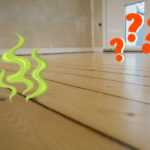
Unpleasant smells coming through floorboards can be a nuisance in any home. Whether it’s the smell of pets, cooking odors, or dampness, these smells can linger and make your living space less enjoyable. Luckily, there are several effective ways to prevent smells from permeating through your floorboards and keeping your home smelling fresh and clean.
Identify and Address the Source
The first step in preventing smells from coming through floorboards is to identify the source of the odor. Is it coming from a particular room or area of the house? Once you’ve identified the source, take necessary steps to address and eliminate it. This may involve cleaning, deodorizing, or fixing any plumbing or structural issues causing the smell.
Seal Gaps and Cracks
Gaps and cracks in your floorboards can be a major culprit in allowing smells to travel between rooms. Inspect your floorboards for any gaps or cracks and seal them with an appropriate filler or sealant. This will help prevent odors from seeping through and keep your home smelling fresh. Additionally, sealing gaps and cracks can also improve energy efficiency and save you money on heating and cooling.
Use Natural Deodorizers
Instead of using chemical-laden air fresheners that only mask odors temporarily, consider using natural deodorizers to eliminate smells at the source. Baking soda, for example, is a great natural deodorizer. Sprinkle some baking soda on your carpet or floorboards, let it sit for a while, and then vacuum it up. Baking soda will absorb and neutralize odors, leaving your home smelling clean and fresh.
Maintain a Clean and Dry Environment
A clean and dry environment is key to preventing smells from coming through floorboards. Regularly clean and vacuum your floors, especially in areas prone to odors. Additionally, make sure to address any moisture issues in your home, such as leaks or dampness, as these can lead to the growth of mold and mildew, which can cause unpleasant smells. Keeping your home clean and dry will go a long way in preventing odors from permeating through floorboards.
By following these effective ways to prevent smells from coming through floorboards, you can keep your home smelling fresh and pleasant. Remember to identify and address the source of the odor, seal gaps and cracks, use natural deodorizers, and maintain a clean and dry environment. With these steps, you can enjoy a pleasant and odor-free living space.
Natural Methods for Eliminating Odors from Floorboards
Vinegar
Vinegar is a natural cleaning agent that can help remove odors from floorboards. Mix equal parts white vinegar and water in a spray bottle. Spray the solution onto the floorboards and let it sit for a few minutes. Then, wipe it off with a clean cloth. The vinegar will help neutralize any unpleasant smells.
Baking Soda
Baking soda is another effective natural odor eliminator. Sprinkle a generous amount of baking soda onto the floorboards and use a broom or brush to work it into the surface. Let it sit for a few hours or overnight, then vacuum it up. Baking soda will help absorb and eliminate odors from the floorboards.
Lemon Juice
Lemon juice is known for its fresh and citrusy scent, which can help mask unpleasant odors. Mix equal parts lemon juice and water in a spray bottle. Spray the solution onto the floorboards and let it sit for a few minutes. Then, wipe it off with a clean cloth. The lemon juice will leave a refreshing scent behind.
Essential Oils
Essential oils have natural deodorizing properties and can be used to eliminate odors from floorboards. Add a few drops of your favorite essential oil, such as lavender or eucalyptus, to a spray bottle filled with water. Spray the solution onto the floorboards and allow it to air dry. The essential oil will leave a pleasant aroma in the room.
Activated Charcoal

Activated charcoal is highly absorbent and can help eliminate odors from floorboards. Place a small bowl of activated charcoal near the affected area or sprinkle it directly onto the floorboards. Leave it overnight, then vacuum or sweep it up. The activated charcoal will absorb the odors and leave the floorboards smelling fresh.
Regular Cleaning
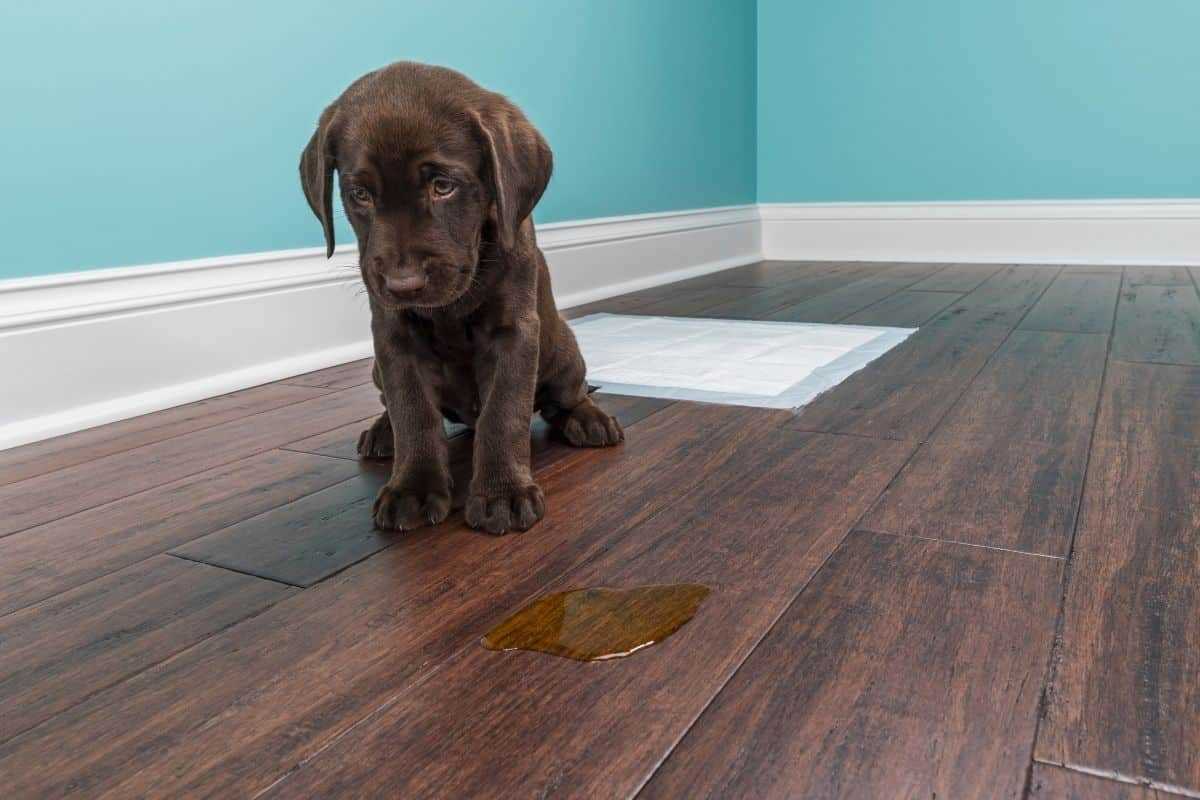
One of the most effective ways to prevent and eliminate odors from floorboards is to maintain a regular cleaning routine. Sweep or vacuum the floorboards regularly to remove any dirt, dust, or debris that may contribute to unpleasant smells. Additionally, mop the floorboards with a mild cleaning solution to keep them clean and fresh.
By using these natural methods, you can effectively eliminate odors from your floorboards without using harsh chemicals. These options are safe, affordable, and environmentally friendly, providing you with a clean and fresh-smelling home.
Effective Ways to Seal Gaps and Prevent Odor Leakage
1. Find the Source of the Odor
Before attempting to seal any gaps or cracks in your floorboards, it is important to identify the source of the odor. This will help you determine the most effective solution and prevent any further odor leakage.
2. Clean and Deodorize the Area
Thoroughly clean the area around the floorboards to remove any dirt, debris, or food particles that could be contributing to the odor. Use a mild detergent and warm water to clean the surface, and then deodorize with a mixture of equal parts water and white vinegar. Allow the area to dry completely before proceeding.
3. Use Caulk to Seal Small Gaps
If you have identified small gaps or cracks in the floorboards, you can use caulk to seal them. Choose a silicone-based caulk that is flexible and waterproof. Apply the caulk directly into the gaps, making sure to fill them completely. Smooth the caulk with a putty knife or your finger to create a seamless finish. Allow the caulk to dry according to the manufacturer’s instructions.
4. Install Weatherstripping on Doors

Oftentimes, odors can enter through gaps underneath doors. Installing weatherstripping along the bottom edge of the door can help create a tight seal and prevent odor leakage. Measure the length of the door and cut the weatherstripping material to fit. Attach it to the bottom of the door using adhesive or nails, and ensure that it creates a snug seal when the door is closed.
5. Cover Gaps with Floor Mats or Rugs
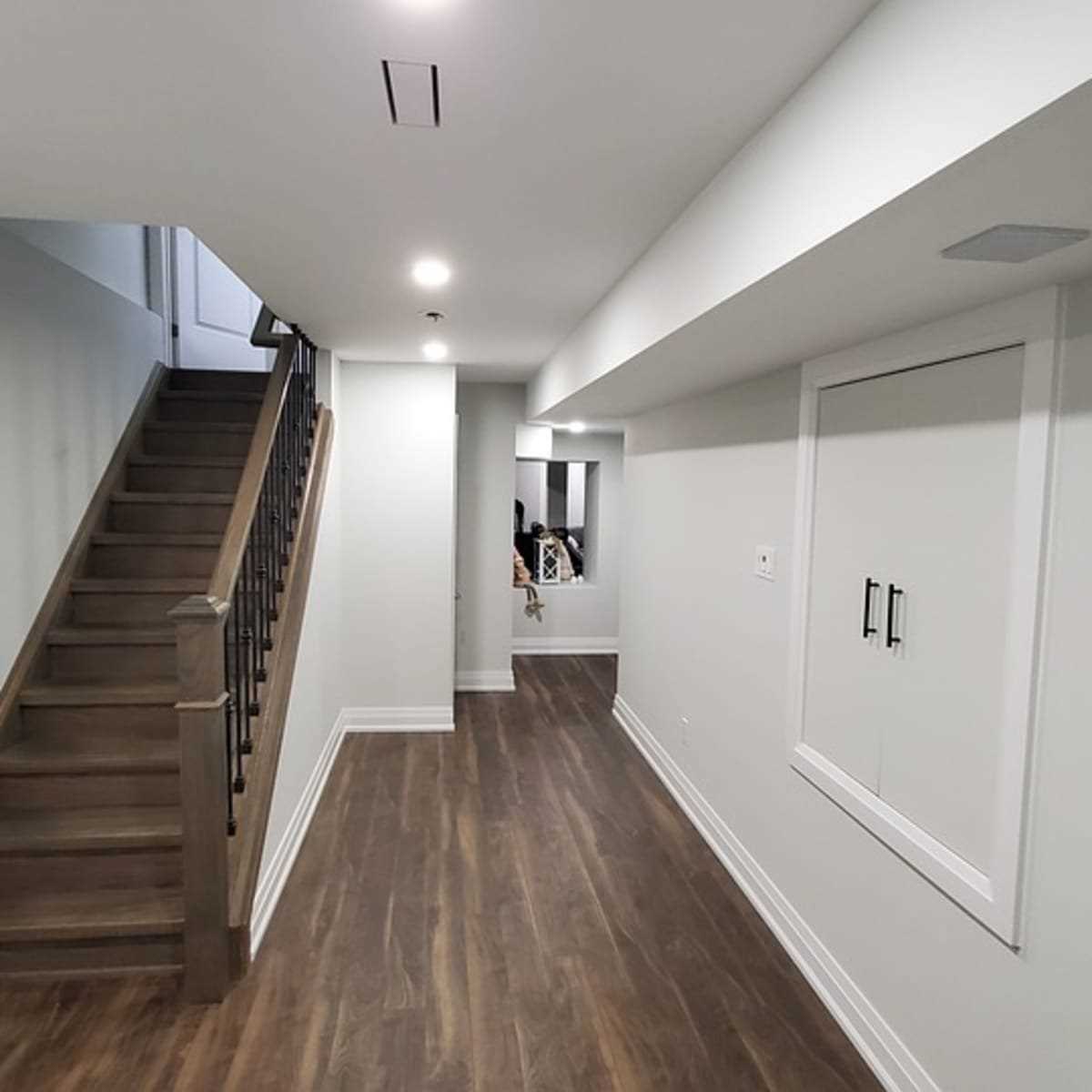
If there are larger gaps between the floorboards that are difficult to seal, consider covering them with floor mats or rugs. This will not only help prevent odor leakage, but also provide an aesthetic solution. Choose mats or rugs that are easy to clean and maintain, and ensure that they cover the gaps completely.
6. Use Odor Absorbing Materials
Place odor absorbing materials, such as activated charcoal or baking soda, near the floorboards to help absorb and neutralize any odors that may be present. These materials can be placed in small dishes or in breathable fabric bags and strategically placed around the affected area.
7. Maintain Regular Cleaning and Maintenance
Preventing odor leakage from floorboards requires regular cleaning and maintenance. Sweep or vacuum the floorboards regularly to remove any dirt or debris that could contribute to odors. Additionally, address any leaks or moisture issues promptly to prevent the growth of mold or mildew, which can cause unpleasant odors.
8. Consult a Professional
If you have tried various methods to seal gaps and prevent odor leakage from your floorboards without success, it may be best to consult a professional. A qualified contractor or flooring specialist can assess the situation and provide recommendations for effective odor prevention solutions.
By following these effective ways to seal gaps and prevent odor leakage from floorboards, you can maintain a fresh and odor-free environment in your home.
Using Vinegar and Baking Soda to Neutralize Odors

If you’re dealing with unpleasant smells coming through your floorboards, vinegar and baking soda can be effective natural remedies to neutralize odors. Both vinegar and baking soda have natural deodorizing properties and can help eliminate the source of the smell.
1. Vinegar
Vinegar, particularly white vinegar, is known for its ability to absorb and neutralize odors. Here’s how you can use vinegar to tackle smells coming through your floorboards:
- Mix equal parts of white vinegar and water in a spray bottle.
- Spray the vinegar solution directly onto the affected area of the floorboards.
- Allow the vinegar to sit for a few minutes to penetrate the surface.
- Wipe away the excess vinegar with a clean cloth or mop.
- Repeat the process if necessary until the smell is eliminated.
2. Baking Soda
Baking soda is another powerful odor absorber that can help neutralize smells. Follow these steps to use baking soda to get rid of odors from your floorboards:
- Sprinkle a generous amount of baking soda directly onto the affected area of the floorboards.
- Use a clean broom or brush to spread the baking soda evenly across the surface.
- Allow the baking soda to sit for at least 30 minutes to absorb the odors.
- Vacuum the baking soda thoroughly from the floorboards using a vacuum cleaner.
- If the smell persists, repeat the process or leave a box of baking soda in the area to continue absorbing the odors.
Both vinegar and baking soda are natural and safe to use on most types of flooring. However, it’s always a good idea to test a small, inconspicuous area first to ensure there are no adverse effects on the floorboards.
Remember, regular cleaning and maintenance of your floorboards can prevent odors from becoming a recurring problem. It’s important to address any underlying issues, such as leaks or moisture problems, to prevent future smells from permeating through the floorboards.
In Summary
Using vinegar and baking soda can be an effective way to neutralize odors coming through your floorboards. Both substances have natural deodorizing properties and can help eliminate unpleasant smells. Remember to test a small area first and address any underlying issues to prevent future odors.
Frequently Cleaning and Vacuuming the Floorboards
One of the most effective ways to prevent smells from coming through floorboards is to regularly clean and vacuum them. By keeping the floorboards clean, you can eliminate the source of many unpleasant odors and maintain a fresh-smelling living space.
1. Sweep the Floorboards
Start by sweeping the floorboards with a broom to remove any loose dirt, dust, and debris. Pay special attention to corners and edges where dirt tends to accumulate.
2. Vacuum the Floorboards
After sweeping, use a vacuum cleaner with a brush attachment to thoroughly clean the floorboards. The brush attachment can help loosen any embedded dirt or dust, ensuring a more thorough cleaning. Vacuum the entire surface of the floorboards, including the areas under furniture and rugs.
3. Spot Clean Stains
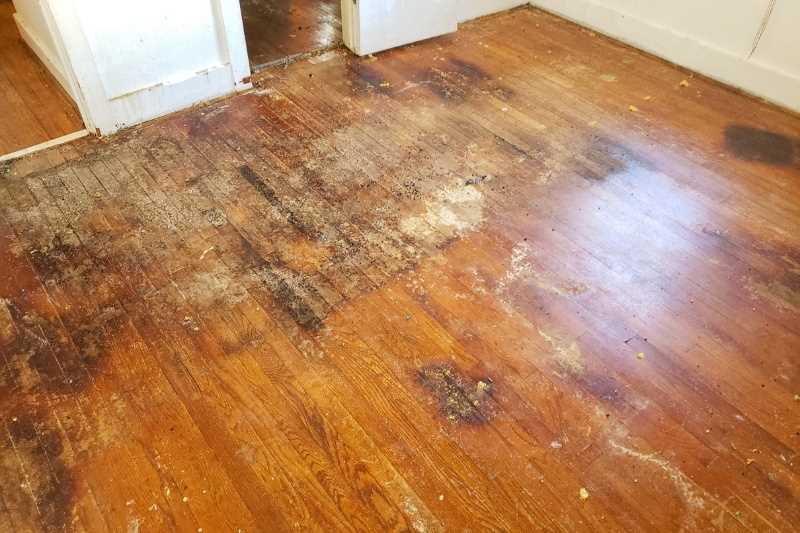
If you notice any stains or spills on the floorboards, it’s important to spot clean them as soon as possible. Use a mild detergent or a specialized wood floor cleaner and a soft cloth to gently clean the affected area. Avoid using harsh chemicals or abrasive cleaners, as they can damage the wood.
4. Use a Wood Cleaner
Periodically, it’s a good idea to use a wood cleaner specifically formulated for floorboards to remove any built-up grime and residue. Follow the instructions on the cleaner and apply it to the floorboards using a mop or a soft cloth. Be sure to rinse the floorboards thoroughly after cleaning to remove any residue.
5. Consider Professional Cleaning
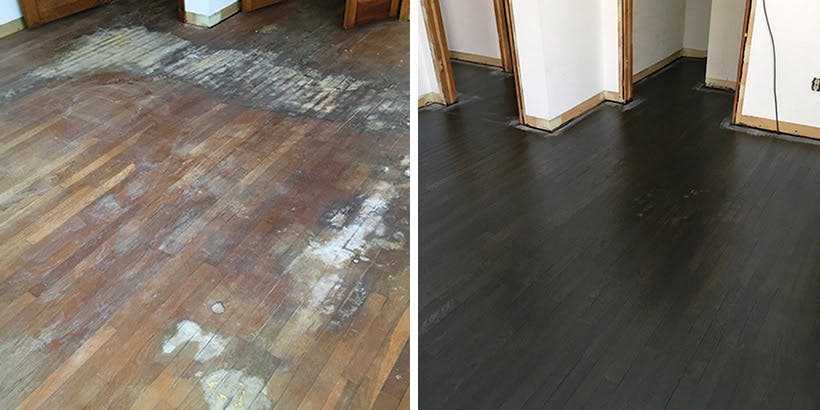
If your floorboards are heavily soiled or have stubborn stains, it may be worth considering professional cleaning. Professional floor cleaning services have the expertise and equipment to deeply clean and restore your floorboards, eliminating any lingering odors in the process.
6. Preventive Measures
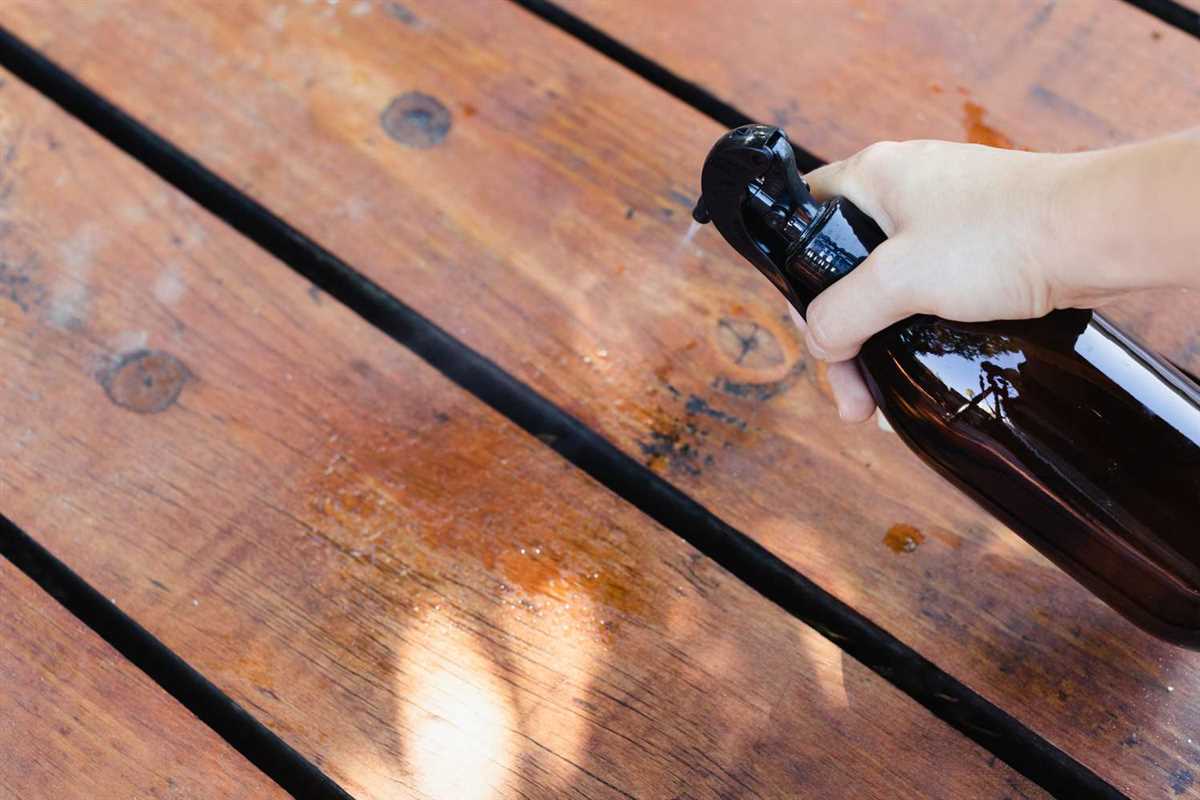
In addition to regular cleaning, there are preventive measures you can take to keep your floorboards smelling fresh. Place doormats at the entrances to your home to trap dirt and prevent it from being tracked onto the floorboards. Use rugs or mats in high-traffic areas to minimize wear and tear on the floorboards. Also, avoid spilling liquids on the floorboards and clean up any spills immediately to prevent stains and odor buildup.
By frequently cleaning and vacuuming your floorboards, you can maintain a clean and odor-free living space. Incorporate these cleaning practices into your routine, and you’ll be able to enjoy the fresh scent of clean floors throughout your home.
Installing a Vapor Barrier to Minimize Odor Transfer
One effective way to prevent smells from coming through floorboards is by installing a vapor barrier. A vapor barrier is a material that helps to minimize the transfer of odors and moisture through the floorboards, helping to keep the air in your home fresh and clean.
Materials Needed
- Vapor barrier sheet or rolls
- Tape measure
- Utility knife
- Sealing tape or adhesive
Steps to Install a Vapor Barrier
- Measure and prepare the area: Start by measuring the length and width of the space where the vapor barrier will be installed. Cut the vapor barrier sheet or rolls to fit the dimensions of the area.
- Clean the floor: Ensure that the floor is clean and free of any debris or dust before installing the vapor barrier. This will help to ensure proper adhesion and minimize the risk of any odors seeping through.
- Apply the vapor barrier: Lay the vapor barrier sheet or rolls over the floor, ensuring that it covers the entire area. Overlap the sheets or rolls by a few inches and secure them together using sealing tape or adhesive. Make sure to seal any gaps or seams properly to prevent any odors from seeping through.
- Secure the vapor barrier: Use sealing tape or adhesive to secure the edges of the vapor barrier to the walls, ensuring a tight seal. This will help to prevent any odors or moisture from escaping through the sides.
- Check for any gaps or tears: After the vapor barrier is installed, carefully inspect it for any gaps, tears, or punctures. These could allow odors to come through, so make sure to patch any imperfections with sealing tape or adhesive.
By installing a vapor barrier, you can significantly minimize odor transfer through floorboards. This simple and cost-effective solution can help keep your home smelling fresh and clean, while also preventing any moisture-related issues that may arise.
FAQ
What are some effective ways to prevent smells from coming through floorboards?
There are several effective methods to prevent smells from coming through floorboards. One way is to use rubber underlay or carpet padding, which creates a barrier between the floor and the room below. Another method is to seal any cracks or gaps in the floorboards with caulk or sealant. Additionally, using an odor-absorbing product, such as baking soda or activated charcoal, can help eliminate smells.
Is there a specific type of rubber underlay or carpet padding that works best?
While there isn’t a specific type that works best for all situations, it is recommended to choose a high-quality rubber underlay or carpet padding that is thick and dense. This will provide better insulation and create a more effective barrier against smells. It’s also important to consider the specific needs of your floor and the room below when selecting the underlay or padding.
Can sealing the cracks and gaps in floorboards completely eliminate smells?
Sealing the cracks and gaps in floorboards can significantly reduce the amount of smells that come through, but it may not completely eliminate them. It’s important to remember that there may be other sources of smells, such as ventilation systems or pipes, that need to be addressed as well. However, sealing the floorboards can greatly improve the overall smell control in your home.
Are there any natural methods to prevent smells from coming through floorboards?
Yes, there are several natural methods that can help prevent smells from coming through floorboards. One option is to sprinkle baking soda on the floorboards and let it sit for a few hours before vacuuming it up. Baking soda is known for its odor-absorbing properties. Another natural option is to place bowls of activated charcoal throughout the room. Activated charcoal can help eliminate odors by absorbing them.
Is it necessary to hire a professional to prevent smells from coming through floorboards?
Hiring a professional is not always necessary to prevent smells from coming through floorboards. Many of the methods, such as using rubber underlay or carpet padding, sealing cracks, and using odor-absorbing products, can be done by homeowners themselves. However, if you are unsure about the best approach or if you are dealing with persistent and strong smells, it may be beneficial to consult a professional for advice and assistance.
How often should I repeat the methods to prevent smells from coming through floorboards?
The frequency of repeating the methods to prevent smells from coming through floorboards may vary depending on the specific circumstances. In general, it is a good idea to regularly check for any new cracks or gaps in the floorboards and seal them as needed. Odor-absorbing products like baking soda or activated charcoal may need to be replaced or replenished every few weeks or months, depending on the level of odor present. It’s important to monitor the effectiveness of the methods and adjust as necessary.











